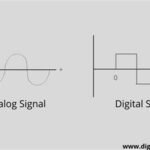While DJing is often associated with creativity, intuition, and crowd interaction, a solid understanding of music theory can significantly enhance your skills and performance. Even if you’re not a musician, learning the basics of music theory can help you make better track selections, create smoother transitions, and mix harmoniously. This guide will explore how music theory can benefit your DJ sets and help you connect with your audience on a deeper level.
1. The Basics of Music Theory for DJs
To get started, it’s important to familiarize yourself with the core concepts of music theory that are most relevant to DJs. Understanding these principles can improve the quality of your mixes and make them sound more polished.
Pitch and Key
- Pitch refers to the highness or lowness of a sound, and key refers to the scale on which a piece of music is based. The key of a track determines its tonal center and the harmony of its notes.
- When you know the key of a track, you can ensure that it matches well with the next track you play. This is vital for creating smooth transitions and harmonic mixing.
Scales and Modes
- A scale is a series of notes in a specific order, and understanding common scales (like major and minor scales) can help you select tracks that complement each other harmonically.
- Modes, like Dorian, Phrygian, and Mixolydian, are variations of scales that give different moods to music. Learning the modes can add variety to your mixes and give you more options when blending songs.
Harmony and Chords
- Harmony is the combination of different musical notes played simultaneously, often forming chords. A good understanding of harmony helps DJs choose tracks that blend well together.
- While you don’t need to be able to play an instrument to grasp this concept, understanding how chords interact with each other allows you to anticipate how different tracks will sound together. For example, mixing songs in the same key will create a harmonious sound, while songs in different keys can create tension or drama when combined correctly.
2. Rhythm and Timing
A strong understanding of rhythm is key to being a successful DJ. DJing isn’t just about playing songs; it’s about creating a continuous flow of music. To do this effectively, you must grasp the timing and rhythm of each track and how they interact with one another.
Time Signature
- Time signature is the number of beats in each measure of a song. Most dance music follows a 4/4 time signature, meaning each bar consists of four beats.
- Understanding the time signature helps you sync tracks properly, ensuring they play in time with each other.
Tempo and BPM
- Tempo refers to the speed of a track, measured in beats per minute (BPM). Different genres of music typically have certain BPM ranges, with house music often sitting between 120–130 BPM, and dubstep around 140 BPM.
- DJs often adjust the tempo of tracks to match or blend them seamlessly. Being able to identify the BPM of a track will help you determine whether it’s compatible with others in your set.

Syncing and Beatmatching
- Beatmatching is the process of matching the BPM of two songs so they play in sync. A good DJ should be able to beatmatch tracks manually or using software.
- By adjusting the tempo and using the right equipment, you can ensure that the beats of two tracks align, allowing for a smoother transition between them.
3. Harmonic Mixing
Harmonic mixing is the art of mixing tracks in a way that complements their key and scale, resulting in a more pleasing and natural blend of sounds. This is one of the most powerful ways to use music theory to elevate your DJ skills.
The Circle of Fifths
- The Circle of Fifths is a tool that can help you understand how different keys relate to one another. By following this circle, you can mix tracks in compatible keys.
- For example, if one track is in C major, you could mix it with tracks in C minor, G major, or A minor. Avoid mixing keys that are too distant from one another, as this can create dissonance that may disrupt the flow of your set.
Key Shifting
- If you’re mixing tracks in different keys, you can shift the key of one or both songs using pitch shifting tools. While this requires a good understanding of how pitch works, it allows you to create more seamless transitions between tracks in incompatible keys.
- Some DJ software includes key detection features, making it easier to identify the key of a track and determine whether it will harmonize with others.
4. Using Music Theory to Enhance Your Performance
Understanding music theory doesn’t just help with mixing—it can also enhance your live performances. Here’s how you can use theory to keep your audience engaged and elevate the emotional impact of your set.
Building Energy with Keys and Scales
- The emotional tone of a song can be influenced by its key. Major keys often sound bright and uplifting, while minor keys can create a more somber or introspective mood. By understanding the emotional quality of different keys and scales, you can build the energy of your set and evoke the right feelings from the crowd.
- You can also experiment with different modes to create a unique atmosphere in your set, using modes like the Dorian or Mixolydian to add an unexpected twist to your performance.
Dynamic Transitions
- Understanding the structure of a song, including the verse, chorus, and breakdown, allows you to anticipate the best times to transition between tracks. This makes your mixes feel more organic and less jarring.
- By planning your transitions around musical peaks and troughs, you can maintain the momentum of your set and ensure that your audience stays engaged.
5. Improving Track Selection with Music Theory
Your knowledge of music theory can also help you make better track selections. When choosing songs to play, consider how they will work together in terms of key, tempo, and mood.
Track Compatibility
- When selecting tracks to mix, think about their musical compatibility. You want to ensure that the tracks you choose complement each other, both harmonically and rhythmically.
- Look for tracks that share similar tempo ranges or key signatures to create smoother transitions and more seamless blends.
Creative Mixing
- A solid understanding of music theory also opens up opportunities for creative mixing. By knowing the elements of a song, such as its melody, harmony, and rhythm, you can create more experimental mixes that push the boundaries of traditional DJing.
- Try layering melodies or creating mashups that add new textures to your performance, resulting in a more engaging and dynamic set.
Conclusion
While it’s possible to DJ without a deep understanding of music theory, mastering the basics can greatly enhance your skills and the overall quality of your performances. By learning about pitch, rhythm, harmony, and key relationships, you can create smoother mixes, avoid musical clashes, and build a deeper connection with your audience. Whether you’re a beginner or an experienced DJ, incorporating music theory into your sets will elevate your mixing abilities and help you become a more versatile and creative artist.











